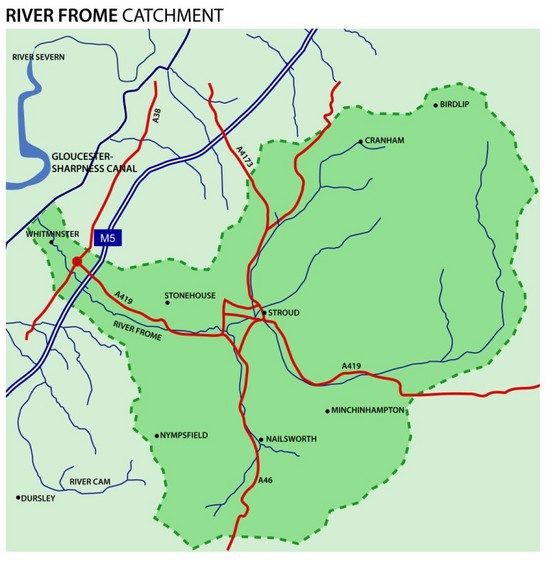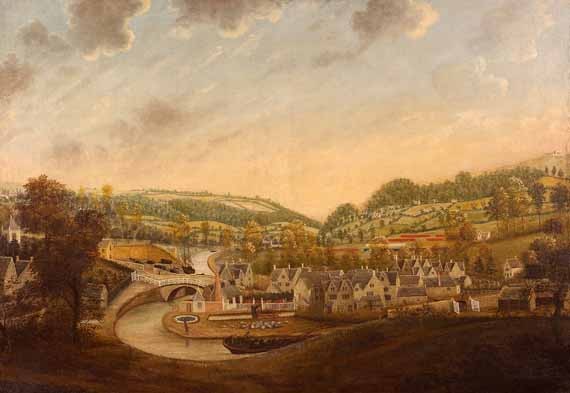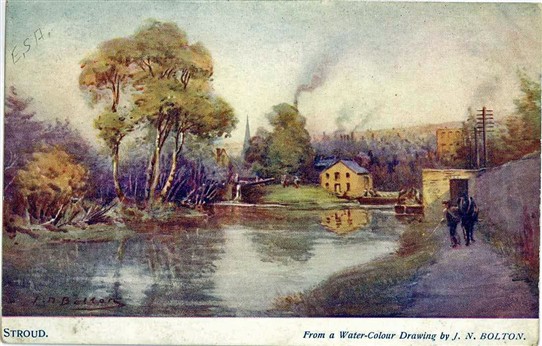At Capel’s Mill by the footbridge over the river Frome. Point out the canal nearby.
A canal is a built structure whereas a river is a natural process.


Guided walk to Capel’s Mill identifying features of rivers.
Canal
Walk back to Wallbridge and stand on the arch bridge. Take care. Cars use this road.


Balance beams on the lockgates. They will only open when the water level is the same both sides of the gate.. Lock, arch bridge, towpath, canal, stream running into the canal called the Slad Brook.
How do locks work? Why are they needed? (To help boats to climb up slopes because water doesn’t flow up slopes.)
The bottom of locks are lined in brick and are the shape of an upside down arch so that the lock walls are stopped from falling into the lock.
Gates have small doors in them to let the water through.
People pulled boats along the canal first and then animals pulled them such as donkeys and horses.
Bricks, stone, wood, iron. Why use materials such as these? They are what was available at the time and they resist bumps and scrapes from boats. Bricks would have been made by the side of the canal when it was first cut from clay dug out of the canal. The bricks would have been ‘fired’ in a kiln built on the bank of the canal.
Before many roads were built the materials used to build the canal would have been brought using the canal as it was being built. A horse could pull 30 tons on water but carry only 1/8 ton by road.


Mostly at that time from the River Severn where they would have been brought from the Forest of Dean, but also a lot of stone from Minchinhampton. Very hard stone was brought from Gun Mills quarry and Abbey quarry near Tintern so the River Wye would have been used to connect the quarries and the River Severn. The stone from these quarries was so hard that masons found it difficult to shape the stone as they wanted so the slightly softer stone from Minchinhampton was used. The canal was started at Framilode next to the River Severn in 1774 and stopped here in Wallbridge in 1779 until the next part of the canal was built called the Thames and Severn Canal.
The Stroudwater Canal was completed in 1779 just before the other canals you can see on the map, so that cargoes could be brought from places such as Bristol, the Forest of Dean and South Wales using the River Severn. When the Thames and Severn was completed in 1789 both canals joined the River Severn and the River Thames and where does the River Thames flow through? London.
Move to the canal under Brewery Bridge and look at the painting of Stroud showing Wallbridge Mill


Children have just been at the site of a textile mill. Travis Perkins (or whichever it is ) is built upon the site of Wallbridge Mill .
Show the painting of Stroud c1820. This explains the processes involved in manufacturing cloth.
Weavers would weave cloth in their cottages and take it perhaps by mule to the mill where it would be hammered to create felt and dyed. In the painting, red cloth can be seen being hung out to dry in rack fields.
To dye cloth, coal was needed to heat the water. To get coal from coalfields it was cheaper to transport it by water.
In the painting look out for boats with masts being hauled by men.
Cargoes would be brought to Stroud from the River Severn because water transport was cheaper than horse transport.
Piles of coal can be seen beyond the arch bridge stacked on the wharf.
Some goods were carried in baskets. The baskets were made from willow branches which, is why willow was an important commodity for canal companies and were grown along the canal and in copses.
Bundles of raw wool can be seen beside the boat with its masts laid flat.
The Thames and Severn Canal was surveyed in 1783 and completed in 1789. The route for this canal included a long tunnel at Sapperton and a pumping station at Thames Head.
People will have dug the canal by hand using picks, shovels and wooden wheelbarrows which all had to be made on site.
Clay was brought to the digging area and made sticky by men trampling it with water to line the cut so that the water wouldn’t seep out.
Locks were the ways in which water and boats are ‘lifted up’. The mortar for the brick lining was made from a particular type of lime which was able to harden under water.
Canals have to be kept at a stable level so that boats can move through the water without going aground so to stop canals flooding there are weirs to let out excess water and some streams are let into the canal using sluice gates to control the flow. At Wallbridge, however, the Slad Brook that flows past Merrywalks and the Painswick stream that flows into the canal at Lodgemoor are not controlled now and do allow a lot of silt into the canal which has to be dredged from time to time.
Now walk alongside the lower lock to walk over the fish pass. Look back to notice an old brick built warehouse . This was built by the Company that built the canal so that cargoes could be stored in it. But isn’t it facing the wrong way for the canal?
The warehouse faced the basin where the Stroudwater ended . The basin was a place for boats to turn around and to deposit the cargo and was built before the Thames and Severn canal was built
Walk on to the little gate that goes through the wall leading into Lodgemore Mill.
As the children go through the gateway what evidence can they see of boats using the canal? Grooves carved by ropes in the stone frame.


Ask the children to turn around and look back and show them the little painting of Wallbridge. What is still here?
Walk back towards the plumbing shop. The children would have wet feet here because this was the basin where the Stroudwater ended before the Thames and Severn was built and now the warehouse can be seen on the side of the old basin. Behind that the old Company house can be seen.